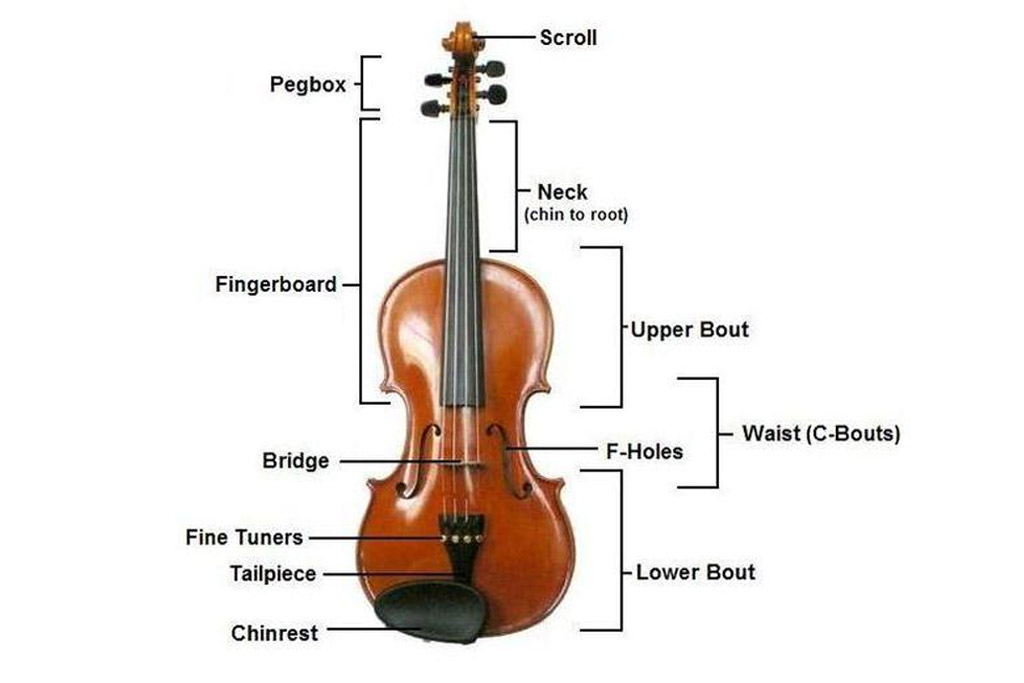How to Tune a Violin? Strings, Types & Steps

The violin is a delicate, complex instrument that requires meticulous attention to maintain optimal sound quality. Tuning your violin correctly is a crucial skill. Whether you are an experienced player or a beginner just starting, learning how to tune a violin is an essential part of your musical journey. This article will help you know how to tune your violin and why it is essential.
Welcome to TheDemoStop, now join the community!
Connect with artists, fans and producers around the world.
How Often Should The Violin Be Tuned?
Violins have a tendency to go out of tune quite easily, especially during practice sessions and performances, changes in temperature or humidity. Thus, it is recommended to tune your violin before each practice session or performance to ensure it is playing at its best.
When you know how to tune your violin, it helps with
- Accurate intonation: Tuning a violin ensures that each string is at the correct pitch, providing a reference point for accurate intonation. Thus, players develop a better sense of pitch and maintain consistent intonation across different musical passages.
- Optimal sound quality: A properly tuned violin will resonate more richly produce a fuller, more pleasing tone. A violin that is out of tune can sound harsh, dull, or unstable.
- Protecting your instrument: Leaving a violin significantly out of tune for an extended period can put unnecessary tension on the strings, other components, potentially leading to damage over time.
Understanding the 4 Violin Strings

While learning how to tune your violin, it is essential to know its strings. A standard violin has four strings, each tuned to a specific pitch. From lowest to highest, the four strings are:
G String (Lowest Pitch)
The G string is the thickest, lowest pitched string on the violin. It is tuned to the note G, which has a rich and resonant tone. Proper tuning of the G string is crucial, as it provides the foundation for tuning the rest of the instrument.
D String
The D string is the second string from the bottom. It is tuned to the note D, a perfect fifth above the G string. This step means that the D string should be tuned five notes (or seven half steps) apart from the D string. The D string has a brighter, more brilliant tone compared to the G.
A String
The A string is the third string from the bottom. It’s tuned to the note A, a perfect fifth above the D string. The A string has a clear, singing quality that helps project the melody.
E String (Highest Pitch)
The E string is the thinnest and highest pitched string on the violin. It is tuned to the note E, a perfect fifth above the A string. The E string has a sharp, penetrating tone and requires the most delicate touch to keep in tune.
How To Tune a Violin?
1: Select the Starting String (G-String)
It is generally best to start tuning with the lowest string, the G string. This move provides a solid foundation for tuning the rest of the strings in relation to the G. Some players refer to start with the A string, but the G string is the more common starting point.
2: Adjust Sharpness
If the G string is sounding sharp (too high in pitch), turn the peg counterclockwise to loosen the string and lower the pitch, thus bringing the string closer to the desіre G note. If the string is flat (too low in pitch), turn the peg clockwise to tighten the string and raise the pitch.
3: Use Fine Tuners Until in Tune
Once the G string is close to the correct pitch, use the fine tuner (the small knob at the tailpiece of the violin) to make small, precise adjustments. Turn the fine tuner clockwise to tighten the string and raise the pitch, or counterclockwise to loosen the string and lower the pitch.
4: Correct Flatness
If the string is still flat (too low in pitch) after making adjustments with the fine tuner, you will need to use the peg (the knob at the top of the violins neck) to make larger adjustments. Turn the peg clockwise to tighten the string and raise the pitch.
5: Use the Peg Box
The peg box is the area at the top of the violin where the strings are anchored. If the fine tuner is at its limit and the string is still not in tune, you will need to use the peg to make more significant adjustments. Gently turn the peg clockwise to tighten the string and raise the pitch, or counterclockwise to loosen the string and lower the pitch.
6: Assume the Proper Posture
When tuning your violin, it is important to maintain good posture. Stand or sit up straight, with the violin resting comfortably on your shoulder and your left hand supporting the neck. This posture will give you better control and stability as you make tuning adjustments.
7: Tighten The String With The Peg
Gently turn the peg clockwise to tighten the string and raise the pitch. Be very careful not to over tighten the string, causing it to snap or become damaged.
Welcome to TheDemoStop, now join the community!
Connect with artists, fans and producers around the world.
8: Perform a Final Tuning With The fine tuners
Once the string is close to the correct pitch, use the fine tuner to make any final adjustments and ensure the string is perfectly in tune. The fine tuner allows for much more precise tuning than the peg.
9: Repeat for Other Strings
After tuning the G string, repeat the process for the D, A and E strings, constantly tuning each string in relation to the previous one. This process ensures that the entire violin is in harmony.
Conclusion
How often should the violin be tuned?
Before learning how to tune a violin, remember to tune your violin before each practice session and performance
Understanding the 4 violin strings
- G string (lowest pitch)
- D string
- A string
- E string (highest pitch)
How to tune a violin?
- Select the starting string
- Adjust sharpness
- Use fine-tuners until in tune
- Correct flatness
- Use the peg box
- Assume the proper posture
- Tighten the string with the peg
- Perform a final tuning with the fine tuners
- Repeat for other strings
FAQs
What is the correct tuning for a violin?
The standard tuning for a violin is G D A E, with the G string being the lowest pitch and the E string being the highest pitch. The pitches are typically tuned in perfect fifths, meaning each string is tuned five notes (or seven half steps) apart from the adjacent string.
How do you tune a violin without breaking the strings?
To avoid breaking violin strings while tuning, always make small, gradual adjustments to the pegs and fine tuners. Tighten the strings slowly and carefully, being especially mindful of the Delicate E string. If a string feels like it is about to break, stop immediately and loosen the tension.
Which way do you turn violin pegs?
To tighten a violin string and raise the pitch, turn the peg clockwise. To loosen a string and lower the pitch, turn the peg counterclockwise. When making adjustments with the pegs, be sure to turn them slowly and gently to avoid putting too much tension on the strings.
How often does a violin need to be tuned?
As a general rule, it is recommended to tune your violin before each practice session and performance. Violins that are played regularly may need tuning every day, while those that are played less often may only need tuning every few days or once a week.
How can I make sure that my strings don't break?
To prevent breaking violin strings, always make small, gradual adjustments to the pegs and fine tuners. Avoid over tightening the strings and be especially careful with the delicate E string. Moreover, replace your strings regularly, as old and worn strings are more prone to breakage.








































